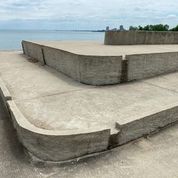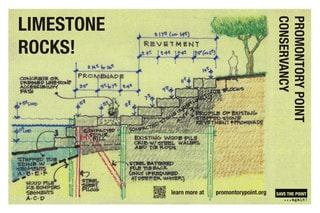|
On June 5, the Conservancy hosted a Q&A session about McLaren's condition study for preservation agencies, preservation organizations, the Army Corps, City and Chicago Park District. Here is the recording (55 min.
0 Comments
Cost Points: cost comparisons of the "locally preferred plan" and preservation construction11/1/2022  We recently discovered -- again -- that repair, restoration and rehabilitation of Promontory Point continues to be cost-effective and cheaper than the City's "locally preferred plan". As you may recall, the City's "locally preferred plan" entails demolition of the historic limestone revetment and new construction of concrete and steel. In 2013, the U.S. Army Corps of Engineers' cost estimate for the "locally preferred plan" was $57m. Adjusted for inflation, the cost of the "locally preferred plan" today is: $75m In sharp contrast, preservation of the Point -- repair, restoration and rehabilitation per the Secretary of the Interior Standards for Historic Preservation -- continues to be cheaper than demolition and new construction. The 2002 Cyril Galvin preservation marine engineering report estimated the cost of repair, restoration and rehabilitation at $4.5m. Adjusted for inflation, that's currently $7.53m, 1/10th the cost of the "locally preferred plan". Given the storm damage erosion at the Point since 2002 and after conversation with four marine engineering firms with preservation experience, we estimate the cost of preservation construction and maintenance at 1/5 - 1/2 the cost of the "locally preferred plan" at: $17-29m Right now, the City is pushing a deception Point: demolition of the limestone revetment, new construction of a concrete revetment with limestone blocks on top as decorative and ornamental. Astronomical to build and to maintain, it is an over-engineered solution for $100m when repair, restoration and rehabilitation of the existing limestone revetment is feasible and multiple times cheaper. This is not a preservation-based approach and violates the Secretary of the Interior Standards for Historic Preservation. We don't need a new concrete revetment. We need the existing limestone revetment -- which still functions at 85 years -- fixed. But even if preservation costs as much as the "locally preferred plan" which it doesn't, Promontory Point would be worth it and park equity on the South Side would be served. |
Categories
All
Archives
July 2024
AuthorDebra Hammond is currently an officer of Promontory Point Conservancy. She has always been tall for her age |
